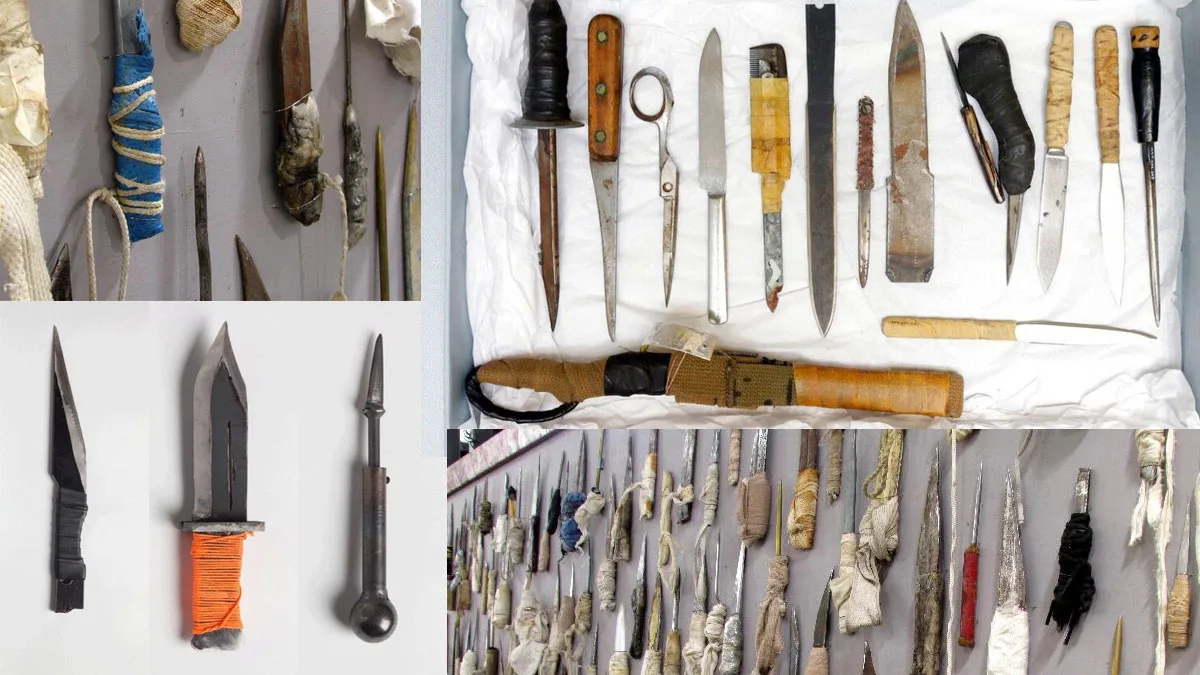Shanks and shivs, homemade knives or stabbing instruments fashioned from everyday materials, are a persistent problem in United States prisons. Despite stringent security measures, these improvised weapons continue to pose a significant threat to the safety of inmates and staff. This article explores the challenges that prisons face in controlling the presence and use of these weapons.
Challenges in Controlling Improvised Weapons
Inmate Ingenuity
Inmates often display remarkable ingenuity in creating shanks and shivs from common items. Materials such as toothbrushes, metal scraps, or plastic can be sharpened into weapons. The vast array of potential materials makes it difficult for prison staff to eliminate all possibilities.
Concealment Methods
Shanks and shivs are easily concealed within cells or carried on the person. Inmates may hide these weapons in their clothing, within mattresses, or in other secretive spots that are less likely to be discovered during routine searches.
Limited Resources
Correctional facilities often operate with limited resources, which can affect the thoroughness of searches and the ability to monitor inmate activity consistently. Staff shortages and high inmate-to-guard ratios can make it difficult to maintain control over weapon manufacturing.
Frequent Movement
The frequent movement of inmates within facilities for meals, recreation, and other activities provides opportunities to pass materials or finished weapons between individuals. This movement makes it hard to track the origin and intended destination of improvised weapons.
Prison Culture
The culture within prisons can contribute to the proliferation of shanks and shivs. In an environment where perceived weakness can be exploited, possessing a weapon may be seen as a necessary means of protection or a method to assert dominance.
Efforts to Mitigate the Problem
Increased Searches
Regular and random searches of cells and communal areas are conducted to find and confiscate weapons. However, the sheer volume of areas to be searched presents a logistical challenge.
Use of Technology
Metal detectors, body scanners, and surveillance cameras are employed to detect the presence of metal-based weapons and monitor inmate behavior. However, non-metallic materials can evade such detection, and surveillance systems may not cover all areas of a facility.
Punitive Measures
Inmates found in possession of shanks or shivs are subject to disciplinary action, which may include solitary confinement, loss of privileges, or additional criminal charges. Despite these consequences, the fear of victimization or desire for power can outweigh the risk of punishment.
Education and Rehabilitation Programs
Some facilities offer education and rehabilitation programs aimed at reducing violence and the perceived need for weapons. These initiatives can be effective but require sustained funding and commitment.
Control of shanks and shivs in U.S. prisons remains a daunting task due to inmate ingenuity, concealment methods, limited resources, frequent inmate movement, and prison culture. While efforts to mitigate the problem include increased searches, technology use, punitive measures, and rehabilitation programs, the challenges are complex and multifaceted.
References
- American Correctional Association. (n.d.). Weapons in Prison. Retrieved from [https://www.aca.org/ACA_Prod_IMIS/ACA_Member/Standards_and_Accreditation/SAC_Home.aspx]
(https://www.aca.org/ACA_Prod_IMIS/ACA_Member/Standards_and_Accreditation/SAC_Home.aspx) - National Institute of Justice. (2019). Correctional Facilities’ Challenges with Weapons and Contraband. Retrieved from https://nij.ojp.gov/topics/articles/correctional-facilities-challenges-weapons-and-contraband
- Federal Bureau of Prisons. (n.d.). Inmate Conduct and Discipline. Retrieved from https://www.bop.gov/inmates/custody_and_care/docs/inmate_conduct_and_discipline.jsp









Leave a Reply